From bamboo weaving to duckweed weaving for export
On the first day of November, from early morning, many old men and women were present at a resident's house in the center of Vang Cuom village (Yen Na commune, Nghe An province) to learn how to weave water fern. This is the second day that the villagers have been directly instructed by water fern weavers from a company from Ninh Binh province. "We have only learned how to weave for one day, but everyone really likes it. When they sleep, they dream of their hands moving as if they are weaving. They just wait for the morning to come and weave," said Mr. Luong Hai Minh (78 years old, Vang Cuom village).
Mr. Minh was born in Vang Cuom village, like many other Thai people, he knew how to weave since he was 10 years old. He woven most of the household utensils himself, from the rice tray, chairs, to fishing rods... "In this highland area, there are many materials for weaving, when you leave the house you will see bamboo, rattan, and reed. That is why weaving has long been a traditional profession, and everyone my age knows how to weave. Besides farming, weaving is a side job, helping families have more food to eat," said Mr. Minh.

After more than 10 years in the army, Mr. Minh fought in many different battlefields. After the country's reunification, he returned to his hometown to start a family, continue farming, and weave to make a living. However, in recent years, as many families prefer items made of plastic, stainless steel, etc., his weaving profession has also become sluggish, with no orders. "There are not many fields, and you have to walk a long way to get there, so it's very hard. So for many years, I have been sitting around doing nothing, occasionally cutting bamboo to weave, mainly for fun. Recently, when I saw the commune announce a contract to weave duckweed for export, I immediately signed up. At first, I thought it would be difficult, because I had never woven duckweed before, but after just a few hours of studying, I got the hang of it," Mr. Minh said with a smile.
In Vang Cuom village, just a few days after the commune announced, more than 10 people registered to learn the craft of weaving water fern. All of them are elderly, over 60 years old. Despite their old age, their wrinkled hands still nimbly hold the water fern string and thread it back and forth. “There is nothing to do here, so most of the young people go to work far away. As for old people like us, we just sit around all day and raise chickens and pigs. Now that the commune has brought this craft back, everyone is very excited. We are doing what is considered a traditional craft and earning extra income. The elderly can sit together, their hands weaving but their mouths chatting animatedly, it is very fun,” said Ha Thi Hai (64 years old).

New livelihoods for highland people
Mr. Nguyen Van Hoe - Vice Chairman of Yen Na Commune People's Committee said that when he first took up his position here, he was very concerned when he saw that a large number of people were often idle and had no side jobs. Meanwhile, people's lives still had many difficulties. "I have a relative who owns a facility weaving water hyacinth products for export in Ninh Binh province. This profession creates jobs for many people and has developed strongly in recent years. Meanwhile, weaving is the forte of the people here. So I really want to bring that job back to the people to do," said Mr. Hoe.
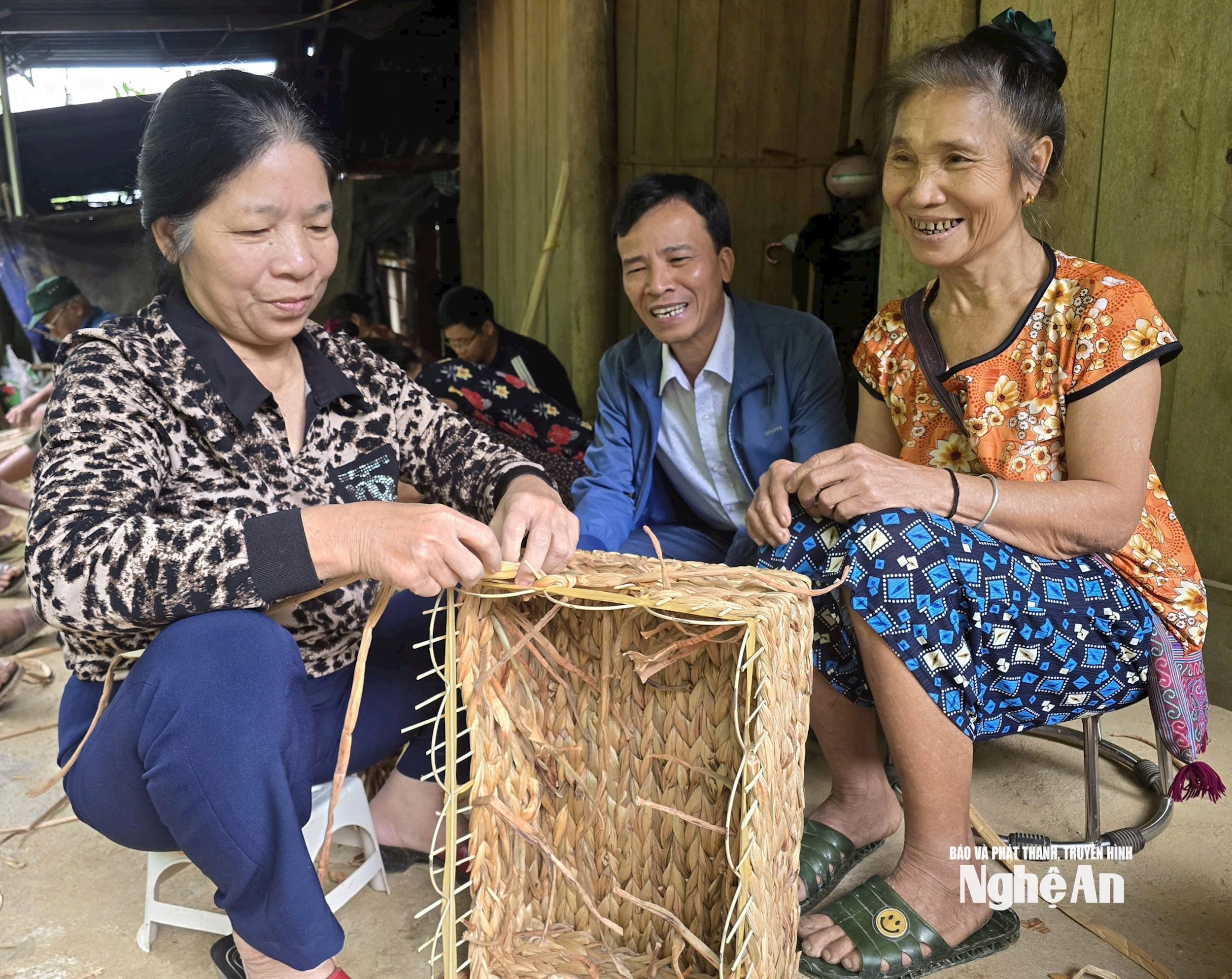
After the idea was welcomed by the commune leaders, Mr. Hoe immediately contacted a relative's company in Ninh Binh. Just a few days later, three water fern weavers brought materials to the villages in Yen Na commune to start teaching the craft. It is known that the main raw material for weaving water fern for export is the water hyacinth stem (also known as water fern). This plant grows naturally on rivers, after being harvested, people will dry and process it to make handicraft products.
Up to now, 5 villages in the commune have completed the training course on water fern weaving. “Currently, each village has more than 10 people who have been taught the craft, those who know the craft then teach others. This craft is also very simple for the people and is suitable for all ages. Our goal is to bring this craft to all 16 villages in the commune, to help people have more income,” Mr. Hoe added.

Mr. Tran Thanh Tung - one of the water fern weavers sent by a company in Ninh Binh to teach the craft to the Yen Na people, said that products made from water fern have been very popular in recent years. Especially in foreign markets such as the US and Europe, because they are not only beautiful but also durable and especially environmentally friendly. The first product that Mr. Tung and his colleagues taught the people to weave was a basket. After the people were proficient in weaving this product, the artisans continued to guide them in weaving other items such as carpets, vases, paper trays, etc. After the products were finished, they were sent to a company in Ninh Binh to be dried, painted, decorated, and then exported abroad.
“Because the people here already have the skills to weave, we can pass on the craft very quickly. Weaving water hyacinth is simpler than weaving rattan or bamboo. We only need a brief instruction, and after a few hours the elders can weave it themselves. With this job, the people do not have to worry about materials or product consumption. Water hyacinth will be taken from other localities, and the company will deliver it to the people. The people can weave as much as they want, there is no limit on quantity. Just receive the materials and go home to weave in their free time, and the elders who like to have fun can gather and weave together,” added Mr. Tung.
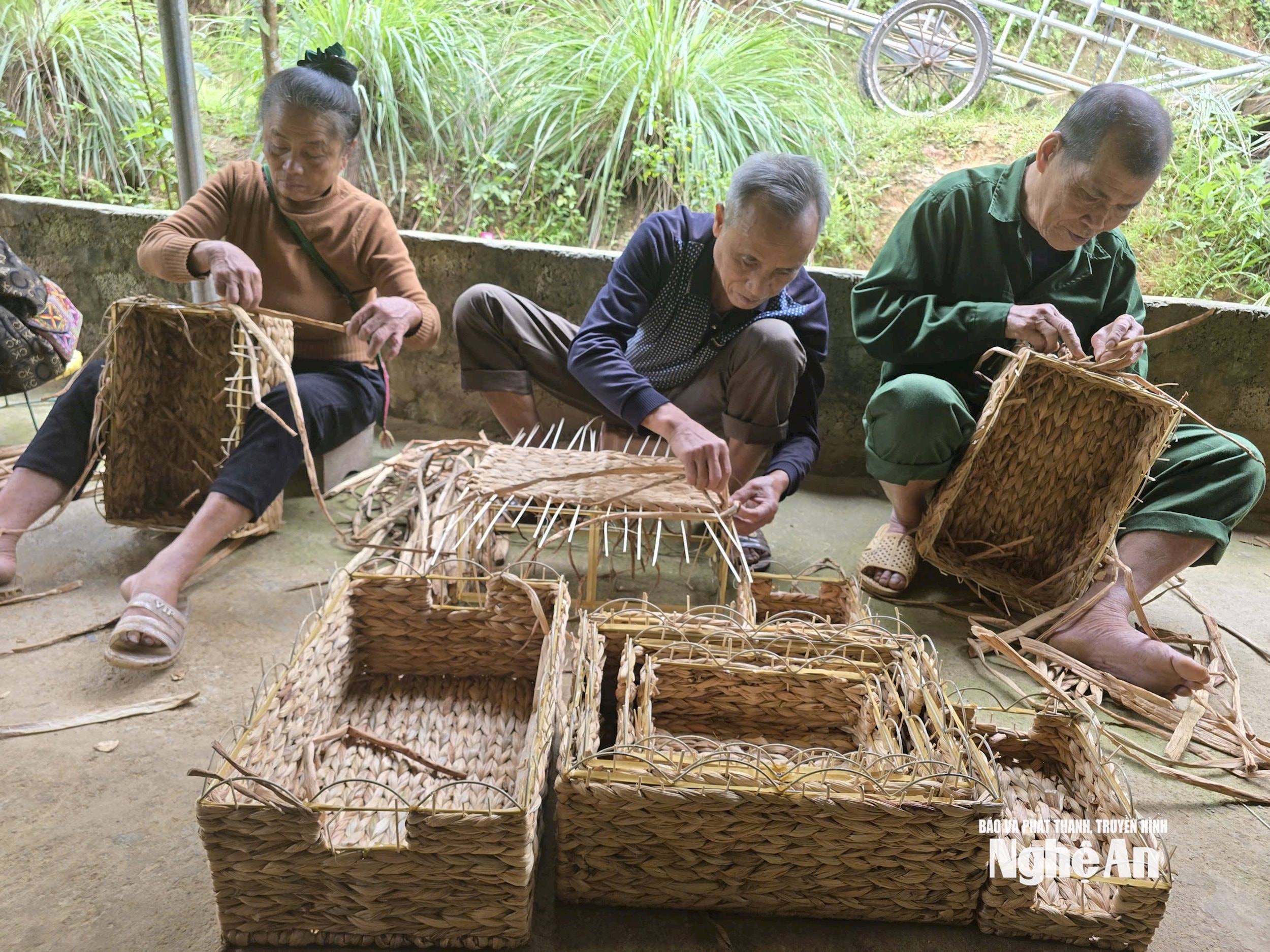
According to Mr. Tung, the water fern weaving profession is currently very developed in Ninh Binh, creating jobs for tens of thousands of workers. “After mastering the weaving, the company will start placing orders with people and sending in materials. On average, people can earn 150,000 VND per day thanks to this water fern weaving. In Ninh Binh, there are many people who have been doing it for a long time, weaving difficult and fast items, so they can earn nearly ten million VND per month,” said Mr. Tung.
For people in the highlands, a monthly income of 3 to 5 million VND from weaving water hyacinth is enough to take care of life. Currently, there is no work in the countryside, so not only young people but also many couples have to send their children to their grandparents to work in companies far away. Children do not have their parents near them, so there are many consequences. We hope that not only the elderly but also young people can do this job. Such income is suitable for people in the highlands. They can work at home, without having to follow any working hours.
Mr. Nguyen Van Hoe - Vice Chairman of Yen Na Commune People's Committee
Source: https://baonghean.vn/lanh-dao-xa-vung-cao-nghe-an-mang-nghe-dan-beo-tay-ve-cho-nguoi-cao-tuoi-10311148.html


![[Photo] Prime Minister Pham Minh Chinh attends a conference to review one year of deploying forces to participate in protecting security and order at the grassroots level.](https://vphoto.vietnam.vn/thumb/1200x675/vietnam/resource/IMAGE/2025/11/12/1762957553775_dsc-2379-jpg.webp)




![[Photo] Highways passing through Dong Nai](https://vphoto.vietnam.vn/thumb/1200x675/vietnam/resource/IMAGE/2025/11/12/1762940149627_ndo_br_1-resize-5756-jpg.webp)













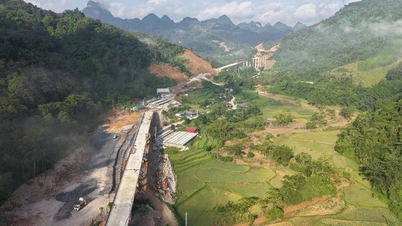

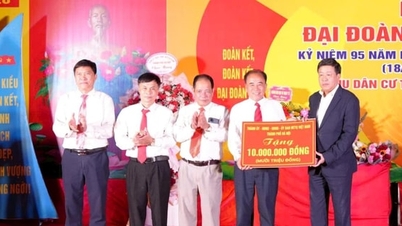











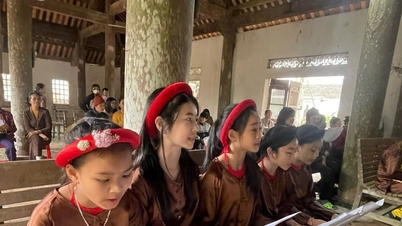

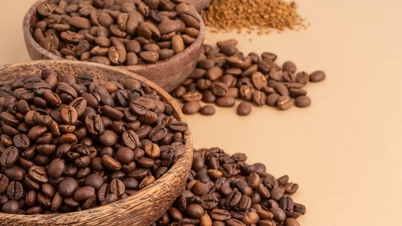







































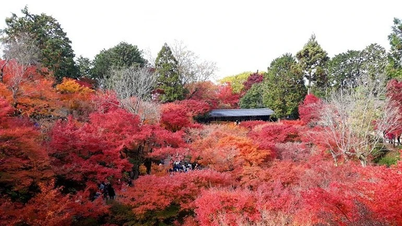









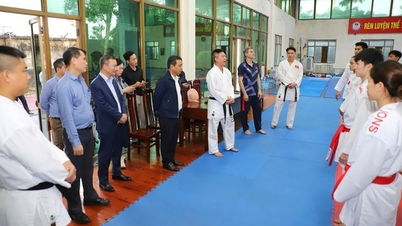

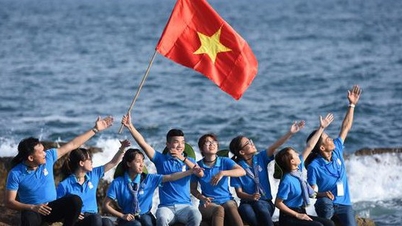


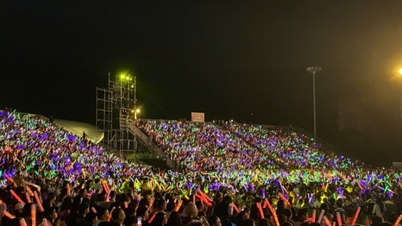



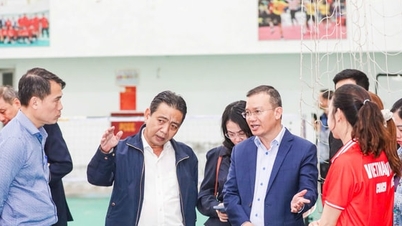





![Dong Nai OCOP transition: [Article 3] Linking tourism with OCOP product consumption](https://vphoto.vietnam.vn/thumb/402x226/vietnam/resource/IMAGE/2025/11/10/1762739199309_1324-2740-7_n-162543_981.jpeg)



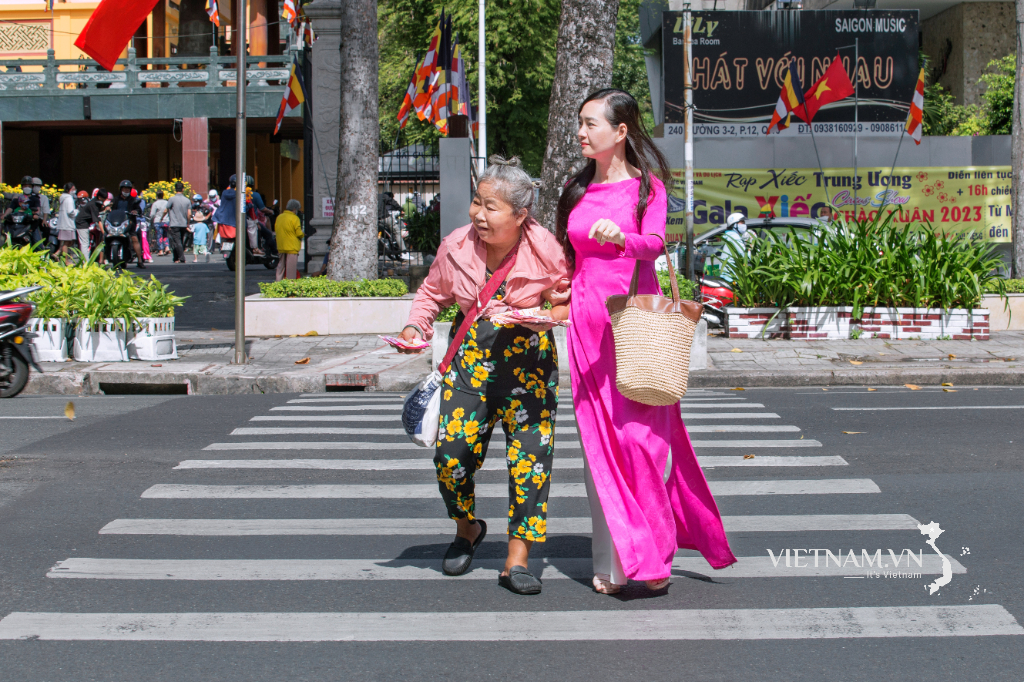


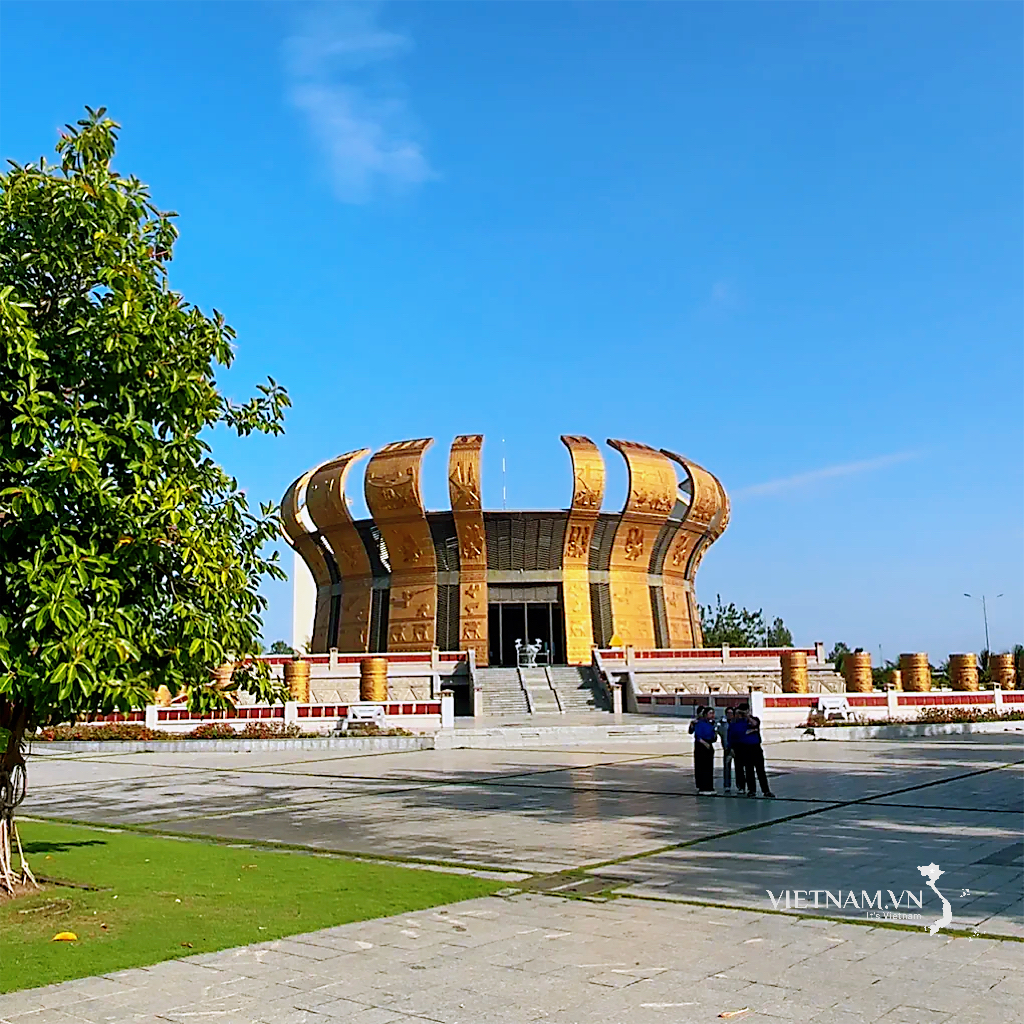
Comment (0)